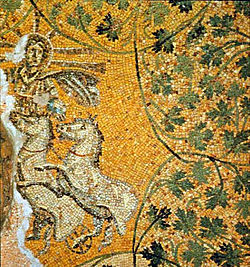
 |
Freethought & Rationalism ArchiveThe archives are read only. |
|
|
#11 | ||
|
Veteran Member
Join Date: Apr 2002
Location: N/A
Posts: 4,370
|
Quote:
But I hope I'm not being misunderstood. I too vaguely think that there are parallels, perhaps connections. I'm being sceptical, tho, until I see something resembling first hand evidence. I'd advise everyone else to do the same. All the best, Roger Pearse |
||
|
|
|
|
#12 | ||
|
Veteran Member
Join Date: Apr 2002
Location: N/A
Posts: 4,370
|
Quote:
The idea that Christians destroying pagan cults and turning the buildings over to new uses indicates that they *adopted* the cults is one only possible to some people in a very strange state of mind. All the best, Roger Pearse |
||
|
|
|
|
#13 | |
|
Veteran Member
Join Date: Sep 2004
Location: Birmingham UK
Posts: 4,876
|
Quote:
See also marco polo vol 2 for Polo's version of the Buddha's life with useful notes about Barlaam and Josaphat. Andrew Criddle |
|
|
|
|
|
#14 | ||
|
Contributor
Join Date: Mar 2003
Location: London UK
Posts: 16,024
|
http://en.wikipedia.org/wiki/Christianised_sites
Quote:
Quote:
|
||
|
|
|
|
#15 | |
|
Contributor
Join Date: Mar 2006
Location: Falls Creek, Oz.
Posts: 11,192
|
Dear Clive,
Outstanding references. Many thanks for new ideas.  Caption: An image from the necropolis under the vatican in which Jesus = Mithras. What is the date of this one? Has this a name of its own? Fascinating artistic motifs.... THE BIG QUESTION: In answering this question examine with care the extensive series of psychological tests which have been conducted concerning the matrix of responses given to images such as the one below. The results of these tests tend to indicate that when evidence is produced and placed directly in front of peoples' eyes, what they see in the evidence is highly related to preconceptions and conditioning and expectations of their own. There is not just "one way at looking at certain "evidence".....  Sourced from Mathworld: Quote:
Best wishes Pete |
|
|
|
|
|
#16 | |
|
Contributor
Join Date: Jun 2000
Location: Los Angeles area
Posts: 40,549
|
Quote:
That makes the rest of your post a little irrelevant. |
|
|
|
|
|
#17 | |
|
Regular Member
Join Date: Dec 2004
Location: California
Posts: 416
|
Quote:
You'll have to do better than that to make a convincing case. Didymus |
|
|
|
|
|
#18 |
|
Regular Member
Join Date: Dec 2004
Location: California
Posts: 416
|
|
|
|
|
|
#19 | |||
|
Contributor
Join Date: Mar 2006
Location: Falls Creek, Oz.
Posts: 11,192
|
Quote:
Quote:
I cited the caption (hyperlinked above) as presented on the page referenced in Clivedurdles post. The caption states Mithras, the discussion states Sol Invictus. The caption looks to be incorrect. But the comparison is just shifted: Was Jesus depicted as Sol Invictus..... or .... Best wishes Pete |
|||
|
|
|
|
#20 | ||
|
Veteran Member
Join Date: Apr 2002
Location: N/A
Posts: 4,370
|
Quote:
But... do we know this is Jesus? I'm not sure that we can say Sol Invictus; the iconography is incomplete, isn't it? It could be Helios here? I read recently that when Christianity became fashionable in the fourth century, the workshops had to adjust to produce new items like Moses etc, and tended to adapt stock images from their existing pattern books. If so, and it would be natural enough, it would indicate some serious problems with arguments about beliefs from use of iconography. All the best, Roger Pearse |
||
|
|
| Thread Tools | Search this Thread |
|